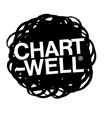
COVID-19, art, and wellbeing: A digest of recent research
Recent research on the connections between creativity, art and wellbeing has, unsurprisingly, been shaped by the pandemic and the accompanying public health response. Due to COVID-19 risks and restrictions, there has been a shift away from face-to-face delivery towards digital or distanced experiences. There has also been changing patterns of engagement, as people's work, school and family commitments fluctuate.
This has created a challenge for providers, however, a common theme amongst recent research is the positive effect that creative practices and engagement with the arts has continued to have on general wellbeing during this period. As well as highlighting the essential place which art has in promoting overall health and wellbeing, research suggests that the flexibility and resilience of both providers and participants has enabled people to retain their agency and to stay connected.
Connection
The arts have been used to facilitate connection and communication during the pandemic. For health professionals, the arts have supported them to engage in reflective and potentially vulnerable discussions with colleagues. In one programme, medical students and clinicians participated in a non-hierarchical creative enquiry (Younie, Elliott, & Buckland, 2021).
This included zoom meetings which started with ‘flow’ exercises (which involved quiet presence and gentle activity focused on process rather than outcome e.g. doodling), followed by dialogue around participant generated creative texts; anything from videos and gifs to painting, music and poetry. The virtual meetings and themes for creative work were co produced by students and clinicians, an aspect of the programme which was instrumental in building trust.
Clinicians of all ranks and specialities participated in a similarly non-hierarchical programme of on-line performances of carefully curated Greek tragedies, followed by guided dialogue (Rushton, Doerries, Green, & Geller, 2020). These creative enquiries and virtual spaces provided opportunities for participants to engage in meaningful reflective conversations, helping them to articulate the challenges they faced and to make connections with each other.
The use of creative enquiry has also been shown to strengthen connections within families. Art at the Start (Armstrong & Ross, 2021) pivoted from in-person art therapy sessions for families with under 3s to art boxes for families to explore together at home. Participants were provided with materials, activity suggestions and information on why these activities could be beneficial. The project supported parents by providing a practical and stimulating activity for them to look forward to each day, and the confidence to adapt and extend these to suit. In exploring the activities together, parents and infants strengthened their connections to each other. They extended this connection to other family or friends through the making process, or by sharing images and gifting finished artworks.

Resilience and Adaptability
The capacity of the arts to support connection-making remotely and within households relies on organisations and practitioners being resilient and flexible, and to foster these qualities in their participants. There are many examples of young people showing and fostering creative resilience and flexibility through the arts during COVID-19. Indeed the arts have been critical; whether through on-line performance, video, street-art or digital media, young people have continued to advocate, support and connect to each other and their communities, helping to assuage some of the long term effects of COVID-19 and its accompanying challenges (Dadich, Boydell, Habak, & Watfern, 2021).
The shift to online spaces for creativity and connection has not been without its limitations, however. For example, in an autoethnographic paper reflecting on their creative response to digitised teaching strategies, a teacher found that moving into a virtual platform with urgency, while possible, was achieved at the expense of compromising both their critical and creative power, and student agency (Chemi, 2021). And, many of the medical clowns, who were physically excluded from their work during outbreaks, expressed in a European survey that the adaptations they made were less valuable than their usual face-to-face visits (Faveri & Roessler, 2021). In both these cases however, participants expressed joy and appreciation for the creative connections they were offered.
Despite the less than ideal conditions, creative practice can operate in difficult times to support and connect people. These few examples illustrate the variety of ways in which practitioners and participants have adapted, and give valuable insights as to what adaptations might be beneficial for all in the future.

The next digest will highlight more new research which contributes to the conversation around creative practice and wellbeing. We welcome your input into selecting which areas of interest to focus on, so please get in touch with any suggestions.
All articles are available as open source publications at the time of writing, or they have a creative commons license, except the two from Public Health:
The project described in Interpretive voices: coproducing creative enquiry in the time of COVID-19 can be found at https://sites.google.com/view/humanflourishingmeded/home/
The Clowning survey article can be found here https://www.rednoses.eu/fileadmin/international/6_News___Stories/2_News/Survey_Impact_of_Covid-19/Clowning_during_COVID-19eA_survey_of_European_HealthcareClowning_Organisations_highlights_the_role_of_humour_and_art_in_thehealthcare_system.pdf
Hosted by Red Noses, a contributing organisation.
References
Armstrong, V. G., & Ross, J. (2021). Art boxes supporting parents and infants to share creative interactions at home: an art-based response to improve well-being during COVID-19 restrictions. Public Health (London), 193, 109-112. https://doi.org/10.1016/j.puhe.2021.01.031
Chemi, T. (2021). It is Impossible: The teachers creative response to the COVID-19 emergency and digitized teaching strategies. Qualitative Inquiry, 27(7), 853-860. https://doiorg.ezproxy.auckland.ac.nz/10.1177/1077800420960141
Dadich, A., Boydell, K. M., Habak, S., & Watfern, C. (2021). Positive Organisational Arts-Based Youth Scholarship: Redressing Discourse on Danger, Disquiet, and Distress during COVID-19. International Journal of Environmental Research and Public Health, 18 (11), 5655. https://doi.org/10.3390/ijerph18115655
De Faveri, S., & Roessler, M. (2021). Clowning during COVID-19 – A survey of European Healthcare Clowning Organisations highlights the role of humour and art in the healthcare system. Public Health (London), 196, 82-84. 10.1016/j.puhe.2021.05.016
Rushton, C., Doerries, B., Greene, J., & Geller, G. (2020). Dramatic interventions in the tragedy of the COVID-19 pandemic. The Lancet: The Art of Medicine. 396, 305-306 https://doi.org/10.1016/S0140-6736(20)31641-X
Younie, L., Elliott, F., & Buckland, R. (2021). Interpretive voices: coproducing creative enquiry in the time of COVID-19. Public Health (London), 196, 201-203. 10.1016/j.puhe.2021.05.031








